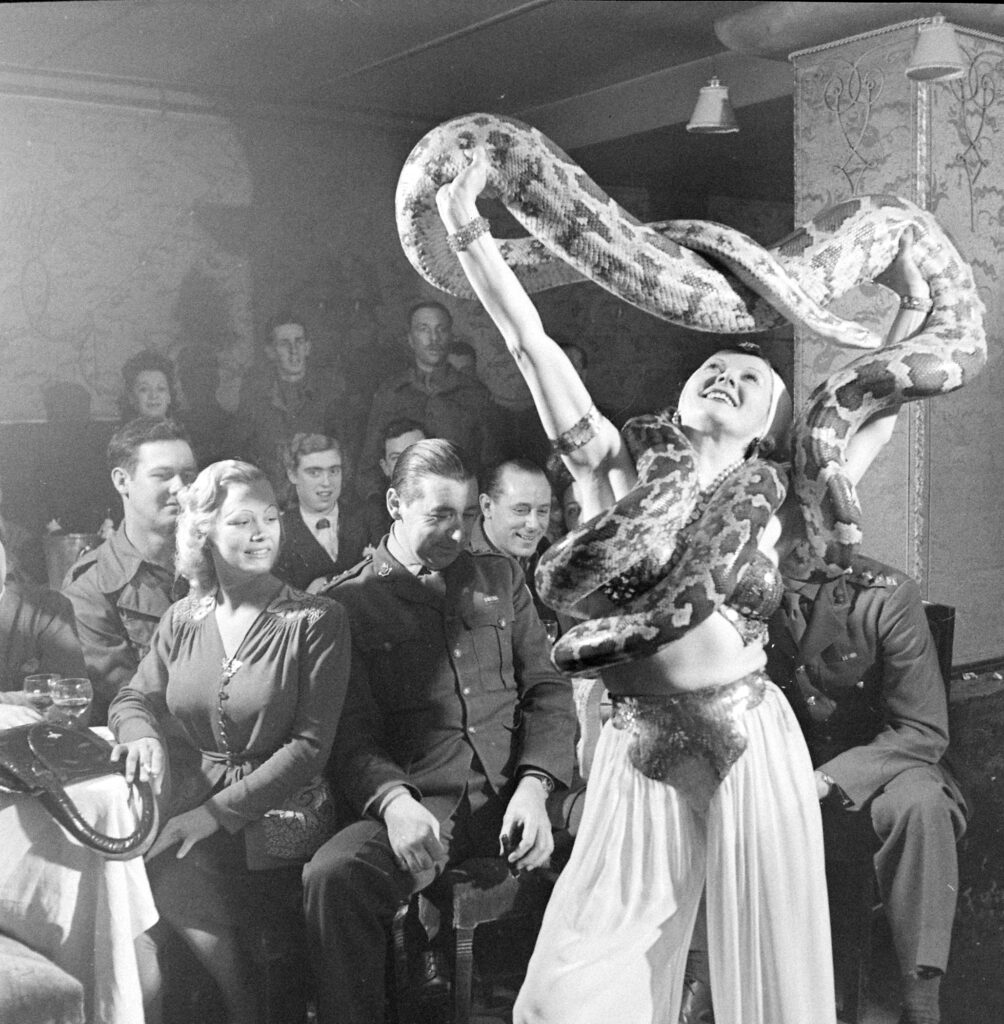The most famous story in the Aug. 8, 1949 issue of LIFE magazine introduced America to an artist named Jackson Pollock, posing the question, “Is this the most famous living painter in the United States?” A few pages away, the magazine also ran an unrelated story which included images from the Museum of Modern Art —with the point of these photos being how sophisticated a model could look outfitted in clothes bought (surprise!) at a five-and-ten.
The low-cost variety store had been around since the late 1800s and took off as a retail concept in the middle of the 20th century. LIFE’s story celebrated the stores as much as the clothing, opening with the declaration, “To visitors from abroad one of the perennial marvels of America is the five-and-ten crammed with household articles.”
Of particular interest to LIFE was the improving quality of the five-and-ten’s clothing selections. “They have proved as fast—and three to four times as cheap—as many a department store at copying simple fashions,” LIFE said.
As proof LIFE ran a fashion spread in which every item came from a five-and-ten and cost $2.00 or less. (The two-dollar price tag translates to $24.59 in 2023 dollars). Some fashions came from the original five-and-ten store, Woolworth’s, (The retail chain went out of business in 1987).
While the clothing was inexpensive, the pedigree for LIFE’s shoot was high-end. Legendary staff photographer Nina Leen was behind the camera while top model Jean Patchett posed for the pictures. The resulting photos are a tribute to the talents of both, as well as to the quality of the discount store wares. Some pictures here are outtakes from the original shoot, but the photos that ran in the original story include prices in the captions for each dime-store purchase.

Jean Patchett modeling earrings (25 cents), a necklace (94 cents), a bracelet ($1.00) and earrings (25 cents), setting off a white rayon blouse (98 cents) for a story on dime-store fashion, 1949.
Nina Leen/Life Picture Collection/Shutterstock

Jean Patchett modeling a dime-store outfit, featuring a cotton sun dress (59 cents) accessorized with a gold kid belt (59 cents), a choker ($1.24), and three costume bracelets (75 cents), 1949.
Nina Leen/Life Picture Collection/Shutterstock

Model Jean Patchett wearing a dime-store hot weather costume that cost a total of $3.41, including the rough-straw bonnet for 45 cents, the blouse and dirndl for 98 cents each, and the $1.00 basket bag.
Nina Leen/Life Picture Collection/Shutterstock

Model Jean Patchett wearing bracelets that cost a nickel each, for a story on dime-store fashions, 1949.
Nina Leen/Life Picture Collection/Shutterstock

Jean Patchett modeling a belt (79 cents), gloves ($1.00) and bracelets ($1.50) that set off a more expensive black dress for a story on dime-store fashion, 1949.
Nina Leen/Life Picture Collection/Shutterstock

Jean Patchett modeling huge Woolworth earrings (25 cents), a beret ($1), and pearl-and-rhinestone clips (50 cents) for a story on dime-store fashions, 1949.
Nina Leen/Life Picture Collection/Shutterstock

Model Jean Patchett wearing a bathing suit fashioned from three allway scarves that cost a total of $1.98, from a shoot on dime-store fashions, 1949.
Nina Leen/Life Picture Collection/Shutterstock

LIFE story on fashions from the ten-cent store, 1949.
Nina Leen/Life Picture Collection/Shutterstock

LIFE story on fashions from the ten-cent store, 1949.
Nina Leen/Life Picture Collection/Shutterstock

LIFE story on fashions from the ten-cent store, 1949.
Nina Leen/Life Picture Collection/Shutterstock

LIFE story on fashions from the ten-cent store, 1949.
Nina Leen/Life Picture Collection/Shutterstock

LIFE story on fashions from the ten-cent store, 1949.
Nina Leen/Life Picture Collection/Shutterstock

LIFE story on fashions from the ten-cent store, 1949.
Woman wearing dress, United States, July 1949

LIFE story on fashions from the ten-cent store, 1949.
Model wearing affordable jewelry as accessories in United States, July 1949.




















































































